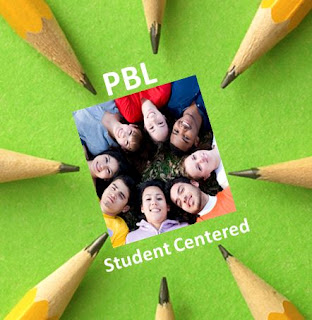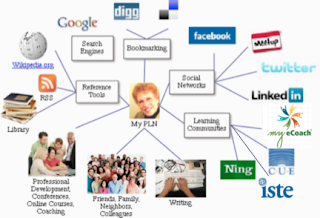The question for this blog was "What can we learn about teaching and learning from these teachers?" I watched all of the 6 videos and I learned different things from each video. I loved the first video I watched,
Back to the Future, because Mr. Crosby seemed like he really cared about his students. Most of his students were from low-income families where english was not the first language.
He uses blogs in his 4th grade classroom and has his students write what projects they have done and how they did the projects. He had his students do a project called "High Hopes". They wrote what their high hopes were on their blog, then they put it into this balloon that they created. He then had his students pretend to be a balloon and explain their balloon's journey up into the sky. This seemed like such a great project because it focused on "active learning". Meaning that it empowered the students to learn on their own. The kids in Mr. Crosby's class had so much fun with this project. They then got to really make a balloon and send it off to the sky with a video camera attached to it. Another thing I loved about Mr. Crosby's teaching methods was how he incorporated one of his students who was diagnosed with Leukemia, in the classroom. Mr. Crosby had the student, Celeste, Skype the classroom and do an activity with them. This honestly touched my heart and made me smile. He wanted her to feel as "normal" as possible.
The second video was the
Blending Learning Cycle. Teacher Paul Anderson, uses online and mobile activities in his classroom. He gives his students a project and they must follow the steps of "QUIVERS". I really liked these steps because you can use these for any project you do in your classroom. The steps are:
Qu- question (something the students don't understand)
I- investigation/inquiry (let them experiment with the project)
V- video (makes a video to let the student's watch and review)
E- elaboration
R- review (Mr. Anderson will meet with students and asks them questions to make sure they actually know what they are learning.)
S- summary quiz (if they fail, they must repeat the QUIVERS steps)
I thought that this would be a very helpful thing to do with my class because it can really insure you that your students REALLY know what they are learning and doing.
The third thing I looked at was
Making Thinking Visible. Unfortunately, I couldn't find the small clip we were supposed to watch, but I did take a look "inside" the book. The book comes with DVDs for teachers to watch and learn how to teach certain things, it gave tips on how to do things with certain lessons, and gave examples as well. This would be a very good tool to use for a first year teacher.
The fourth video was
Sam Pane 4th Grade. This was a video on Mr. Pane's 4th grade class and how they became a "Super Digital Citizen". He has his students make a super hero on a safe website, while also incorporating the English learning standards. They put together a "real story" and had students use pictures, videos, and design their own superhero! He said that it "makes the project meaningful to the students". The harder they work on it, the more it means to them. He taught his students how to safely use the internet and what is not safe to put on the internet. I think this is extremely smart to do. With the use of technology expanding tremendously in the classroom, you have to have your students know how to properly use the internet. Like what sites are safe, valuable, and reliable.
The fifth video was
Project Based Learning by Dean Shareski. This was an "Integrated Study Project" that incorporated teachers of different subject to work and collaborate together. It was mainly a video on the english and history teachers working together in the classroom. They make the learning "relevant" to the students and it provides the students with claiming "ownership" to their projects. The teachers would walk around the classroom and give feedback to their students, and when they would come back to the student 30 minutes later, the student felt so much more confident in their work. They fixed their areas of problem, and were very proud of what they created.
The last video was
Roosevelt Elementary's PBL Program. This was a video about the use of PBL in the 1st grade classroom. The teachers called it "in depth learning". They provide their students things for researching and incorporate real-world problem solving skills in the classroom. I think that it is obvious that PBLs do have a positive impact on a child's learning. It seems like it really helps the students fully understand what they are learning in the classroom. Also, PBLs incorporate many different learning styles. For example, something may come easy to one student, while another student is having a hard time learning the same content, so with a PBL you can approach the lesson in a different way for the student who is struggling. I really like the idea of that because I really want all of my students to fully understand what they are learning.
One common factor that all of these videos has and what I've learned is that with projects like these, students will become more engaged with what they are learning. They aren't just reading a textbook and doing problems from the back of it, they are actually getting down to the "nitty gritty" of the problem, and solving it.














